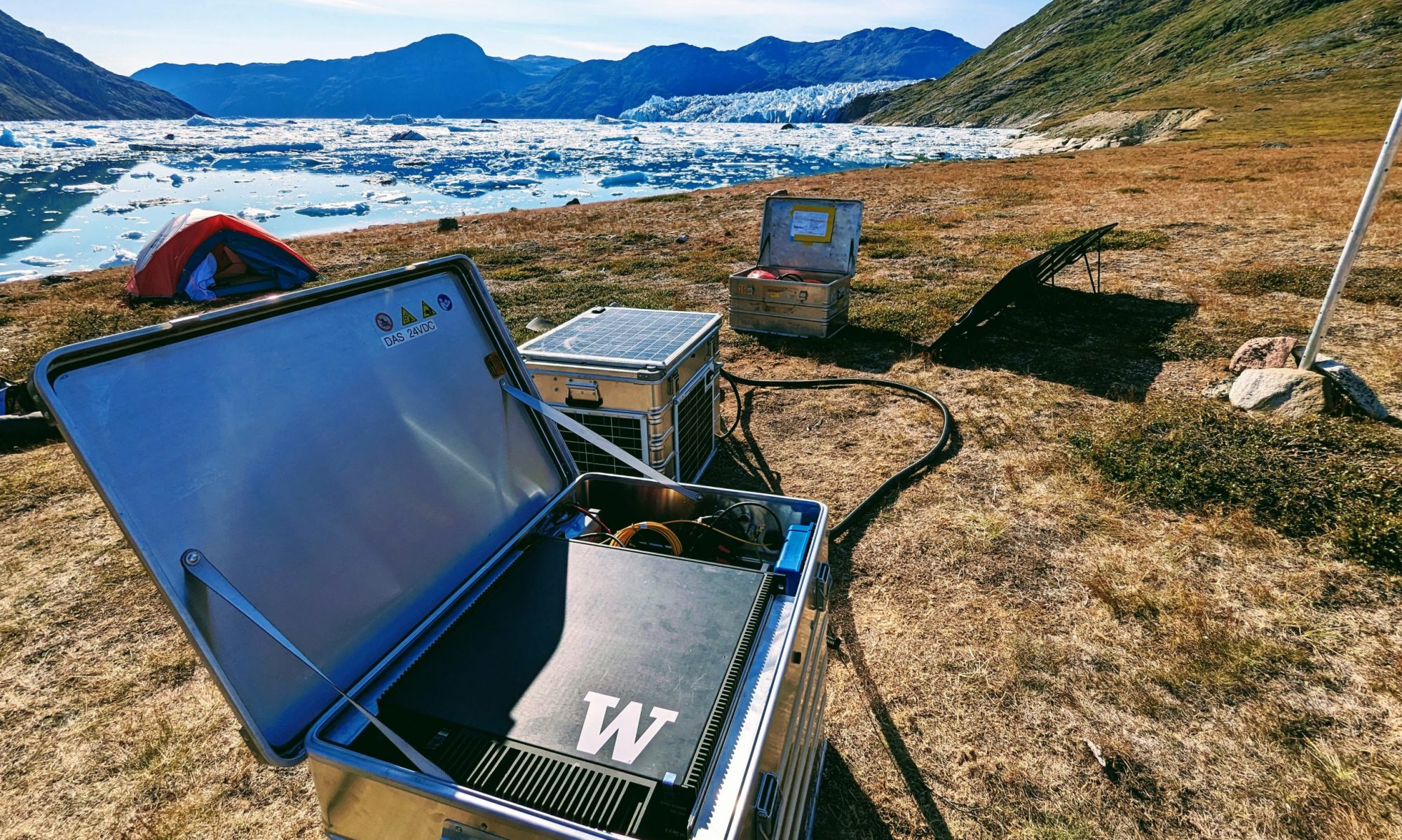DAS Seafloor Monitoring in Cook Inlet, Alaska
Subject: Ocean Seismic Monitoring
Resource Type: Dataset
• Collected:
• 2023-06-08 to 2024-01-02
• 2024-01-05 to 2024-11-21
• Creator: Ethan Williams
• Contact: Brad Lipovsky
• Publisher: UW FiberLab
• Publication Year: 2024
Abstract
Wavefield Reconstruction of Distributed Acoustic Sensing: Lossy Compression, Wavefield Separation, and Edge Computing
In this study, we address the challenge of handling large amounts of data from distributed acoustic sensing (DAS), particularly in offshore areas like Cook Inlet, Alaska. DAS records various ground motions from oceanic and seismic waves, making data management complex. We explore the compression and reconstruction of wavefield data using emerging deep-learning methods. We find that a simple SHallow REcurrent Decoder, SHRED, can generalize over space and time for a single optical fiber, offering a good compression ratio for low-frequency ocean waves. SHRED acts as a low-pass filter and thus struggles with short-wavelength seismic waves. Nonetheless, we can leverage ocean wave reconstructions to help separate them from seismic waves, improving earthquake detection and Earth imaging. Overall, this framework shows promise for remote edge computing on wavefield separation and lossy data compression.
Link to Resulting Publication ▷
Denoising Offshore Distributed Acoustic Sensing Using Masked Auto-Encoders to Enhance Earthquake Detection
Distributed acoustic sensing (DAS) is a new technology that can record seismic signals along fiber-optic telecommunication cables, and it is a revolution for offshore earthquake monitoring. However, the data collected can be difficult for seismologists to analyze because it includes many new signals originating from ocean dynamics and tectonic phenomena, along with new kinds of instrumental effects. To improve earthquake analysis, we develop a machine learning denoising algorithm that learns from the data itself as a self-supervised deep learning model. Our method is developed and deployed in the context of earthquake detection and characterization, and we demonstrate the improved signal quality and recovery of important seismic waves in data collected offshore Cook Inlet, Alaska. With the rapid execution of deep learning methods, our approach can benefit near real-time earthquake monitoring.
Link to Resulting Publication ▷
Cook Inlet, Alaska (59.64° N, 151.53° W)
Dataset Description
DAS cables extending North and South from Homer, Alaska recorded over the course of two different seasons.
DAS
| Instrument | Sintela ONYXTM v1.0 |
| Sampling Rates | 2.5 Hz, 5 Hz, 25 Hz, 50 Hz, 250 Hz |
| Channel Spacing | 9.57m |
| Gauge Length | 23.9m |
| Number of Channels | 8530 |
Comments
Link to DOI:
Citation:
License: Creative Commons Attribution-NonCommercial-ShareAlike 4.0 International
National Science Foundation Award #2346079 Collaborative Research: A seismic investigation of slow slip and fault locking along the Alaska-Aleutian subduction zone
